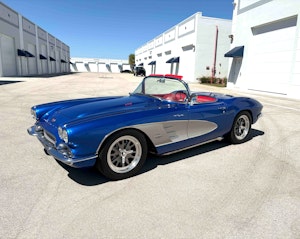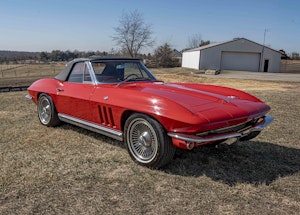Media | Articles
A Porsche 911 Speedster was this Le Mans racer’s consolation prize
In 1985, Jack Griffin arrived in France to race in the fabled 24 Hours of Le Mans. Despite being a native Texan driving for a French team (Bussi), Griffin’s automotive heart belonged to Germany – specifically to Porsche.
On the track, Griffin’s race ended prematurely due to mechanical failure and he was forced to watch from the sidelines as Klaus Ludwig took a Joest Porsche 956B to victory. The festivities now concluded, Griffin planned to just wander the European countryside with his girlfriend for a few weeks before heading back home to his life and real estate business in Dallas.
A new friend, Manfred Janke, had a better idea.
Janke, who, after a stint as Porsche’s motorsports director, became the company’s public relations chief, was a tennis enthusiast. And earlier that week, he and Griffin, also a crack tennis player, struck up a friendship on Le Mans’ tennis courts.
As much as the two men loved cars and racing, they both claimed tennis as their first love – indeed, Griffin still claims that he “won at Le Mans” by citing his victory over Janke in the tennis tournament the day before the iconic race. The two men bonded quickly, their connection cemented by on-court rallies and via a shared passion for Stuttgart’s air-cooled machines.
Marketplace
Buy and sell classics with confidence
“Why don’t come back to Germany with me,” Janke suggested. “You’ve never visited the Porsche factory, have you?”
Conceding that he hadn’t, Griffin soon found himself standing next to Janke at the end of Porsche’s assembly line in Stuttgart, watching as new 911s, 928s, and 944s rolled off the line. Afterwards, they remained in touch, their friendship strengthening along the way.
In early 1988, Griffin dropped a $60,000 check in the mail to Stuttgart as down payment on a Porsche 959 Sport. Soon thereafter, he received a letter from Porsche letting him know that his new supercar would be available for pickup in Germany anytime after May,1989.
Griffin, however, never got his 959. Instead of taking delivery of a new car, Jack opened his mailbox in May, 1989 to find another envelope from Porsche. This one contained a refund of his $60,000 along with a letter explaining that the spoilsports at the Environmental Protection Agency – not believing the story that this was to be a track-only race car – had cancelled his plans to import one of the era’s fastest production cars into the United States.
Griffin nevertheless decided to visit Germany as originally planned. He wouldn’t be getting his 959, but at least he could hang out with his buddy Manfred and, besides, a trip to Porsche HQ was always fun.
When he arrived at the factory, Griffin found himself staring at a lineup of fresh-out-of-the-oven 1989 911 Speedsters. He had read of this new Porsche model and seen pictures in magazines but, until this moment, he had not been impressed with its looks.
With the cars now in front of him, however, he was completely taken with the Speedster’s styling and decided that he had to have one. It might not be a 959, but it was a special car nonetheless.
Not so fast, Janke informed him. The Speedster was a limited edition model, with only 2,100 produced worldwide, of which a mere 820 were destined for the U.S. market. Every car was already spoken for, said Janke. Griffin was welcome to put his name on the waitlist but it wasn’t likely to make a difference.
About a month later, back home in Dallas, Griffin found another envelope with a Stuttgart return address in his mailbox. Inside was a note from the office of Ferry Porsche himself, informing Griffin that Rich Ford, Porsche North America’s Vice President of Operations (who would eventually become Chief Operating Officer of Porsche North America) had been directed to find Griffin a Speedster.
Janke had obviously not taken his defeat on the tennis courts of Le Mans personally. While Jack was on a flight back to Texas, Janke had walked down the hall of Porsche headquarters to the office of Dr. Porsche, son of founder Ferdinand Porsche and, at that time, head of the whole operation. Was there a dealer in the United States, Janke wondered, that might not need one of those Speedsters after all?
So it was that Jack found himself writing a check to a Porsche dealer in Columbia, Missouri, for a red 1989 Porsche 911 Speedster, knowing all the while that a nervous salesperson in the American midwest was simultaneously trying to figure out how to explain to a local dentist that he wouldn’t be getting that German sports car he’d coveted after all.










